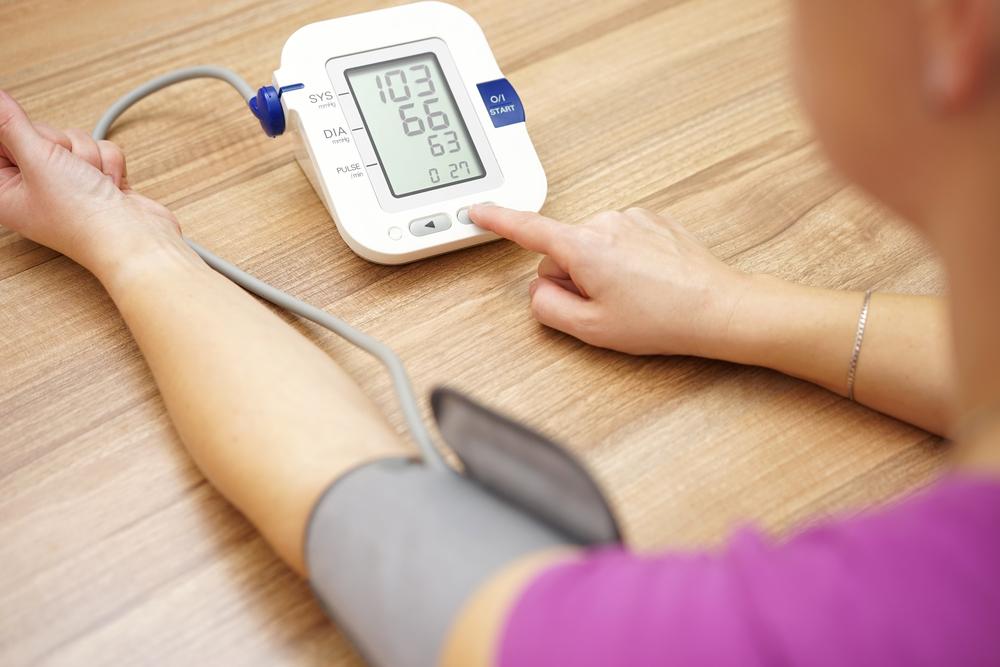High blood pressure, or hypertension, is very common across the U.S., affecting an estimated one out of every two or three adults. The condition may not show any symptoms, but it’s major risk factor for heart attack or stroke — and many don’t realize it.
For the millions of U.S. adults who have been diagnosed with high blood pressure, taking BP readings at home was a common practice even before the COVID-19 pandemic. However, over the past 18 months or so, home-monitoring of blood pressure has become even more important. That’s because hypertension is an underlying health condition which may put someone at a higher risk for severe illness from COVID-19.
Ian Del Conde, M.D., a cardiologist and vascular medicine specialist at Miami Cardiac & Vascular Institute.
“During COVID-19, we had the absolute necessity to empower patients to monitor themselves at home and to establish ways with which doctors could take care of these patients without the need of that physical interaction,” explains Ian Del Conde, M.D., a cardiologist and vascular medicine specialist at Miami Cardiac & Vascular Institute, part of Baptist Health. “And what we learned is that there are many conditions, especially those chronic diseases, such as high blood pressure, that are relatively stable that can be successfully managed remotely.”
The American Heart Association recommends home monitoring for all people with high blood pressure to help their healthcare provider determine whether treatments are working. But, home monitoring is not a substitute for regular visits to your physician, the AHA asserts. If you have been prescribed medication to lower your blood pressure, don’t stop taking your medication without consulting your doctor, even if your readings are in the normal range, the AHA emphasizes.
“In other words, a person may feel perfectly fine yet have dangerously elevated blood pressures,” says Dr. Del Conde. “The only way to know that one’s blood pressure is normal is by measuring it.”
Best Type of Blood Pressure Monitor
Wrist and finger monitors are not recommended because they yield less reliable readings, the AHA states. If you are unsure, ask your doctor for advice on the right type of blood pressure monitoring device.

Physicians recommend opting for a digital monitor over a manual one. “Automated electronic machines using an upper arm cuff are usually accurate,” says Dr. Del Conde. “If there is any question about their accuracy, they can be validated against a blood pressure machine at a doctor’s office.”
Once you’ve purchased a BP monitor, bring it to your next doctor appointment. Your physician can check to see that you are using it correctly and getting the same results as the monitor in the office.
How to Use a Blood Pressure Monitor
Here are the tips from the AHA on using your BP monitor at home:
Be still and calm. That means don’t smoke, drink caffeinated beverages or exercise within 30 minutes before measuring your blood pressure. Empty your bladder and ensure at least 5 minutes of quiet rest before measurements.
Sit properly with your back straight and supported. Best option is a chair, rather than a sofa. Your feet should be flat on the floor and your legs should not be crossed. Your arm should be supported on a flat surface (such as a table) with the upper arm at heart level. Make sure the bottom of the cuff is placed directly above the bend of the elbow. Check your monitor’s instructions for an illustration or have your healthcare provider show you how.
Measure at the same time every day. It’s important to take the readings at the same time each day, even if you’re taking your blood pressure more than once a day as is recommended. Ideally, take your readings daily beginning two weeks after a change in treatment and during the week before your next appointment.
Take multiple readings throughout the day, and record the results. Each time you measure, take two or three readings one minute apart and record the results using a printable (PDF) tracker. If your monitor has built-in memory to store your readings, take it with you to your appointments. Some monitors may also allow you to upload your readings to a secure website after you register your profile.
Don’t take the measurement over clothes. The cuff must be fitted over your arm, touching the skin.
Tags: high blood pressure, Miami Cardiac & Vascular Institute
